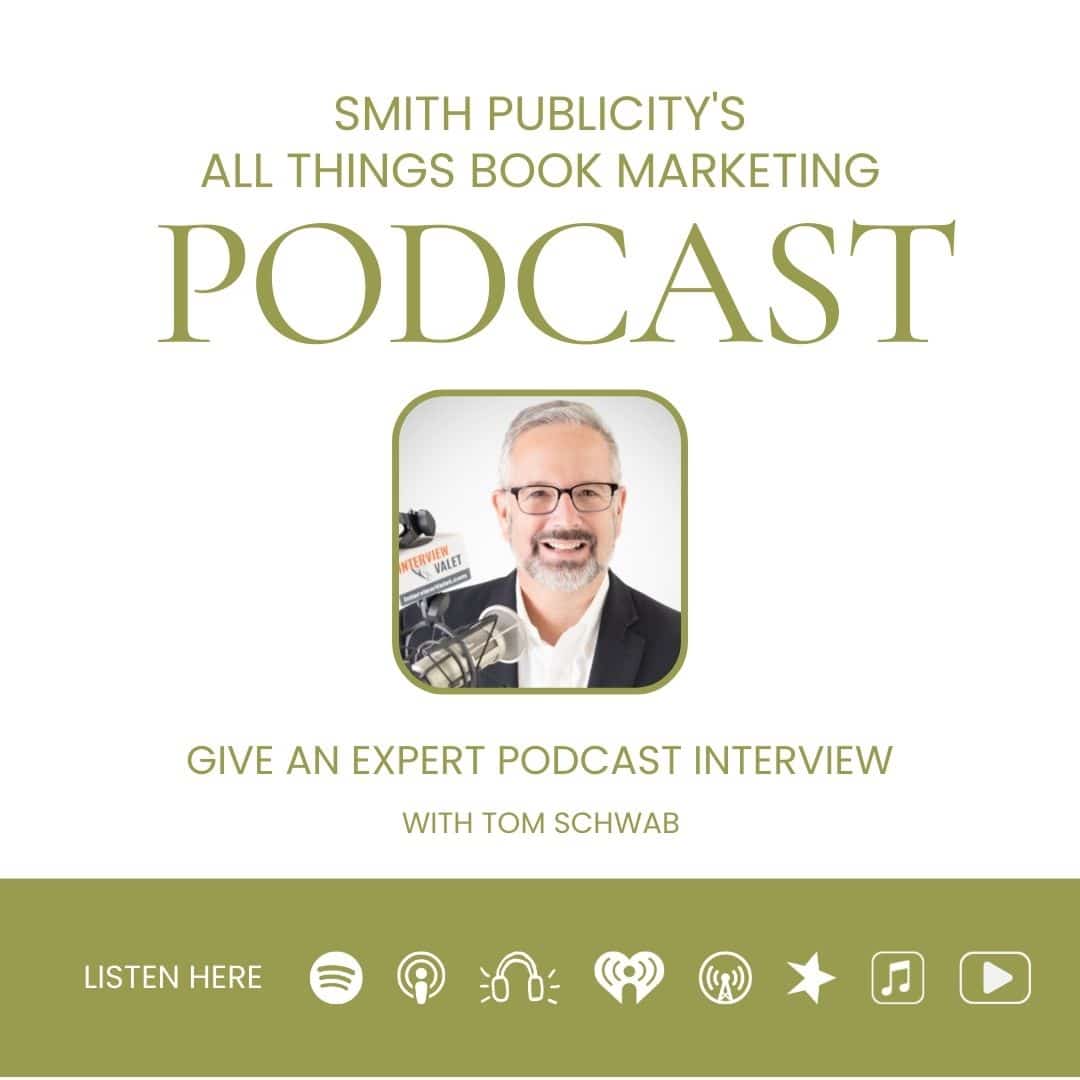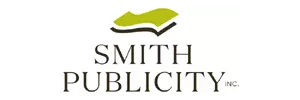New Podcast Episode: Give an Expert Podcast Interview with Tom Schwab
What does the current podcasting landscape look like?

When we started 2015, you’d say “podcast” and people would go, “What’s that?” About 2019, it started to take off, and COVID helped that, but even the definition of what a podcast is has changed. You might hear people say, “Well, I don’t listen to podcasts,” but they may watch the snippet on Facebook or LinkedIn. They may watch an interview on YouTube.
YouTube is now the biggest search engine for podcasts, so podcasts are more evergreen but also more common out there. It’s so easy to have this discussion, to capture it, to repurpose it. It’s very intimate conversation, but a very powerful at the same time.
What are the benefits of being on podcasts?
Especially when you’re an author, there’s some kind of point of view that you have. If you didn’t have a different point of view, you wouldn’t have written a book, and to try to explain that in a Facebook post or a meme can be very tough. For most people, they have to know who the author is. What gives you the expertise to say that? That takes more of a discussion. Back in the day, those discussions used to be called book tours, where you’d go to different bookstores and communities and talk, and people would come in and maybe you’d do a reading. All of that was still tapping into an established audience. Well, that doesn’t happen nearly as much, and it’s not as effective.
Whereas with a podcast, it’s one of the few mediums that is not only evergreen, meaning it’s good today and for years to come, but it also allows people to listen when they want, where they want, in the format that they want, and even at the speed they want.
The data says that 70% of the people that listen to podcasts listen to them sped up. It’s one of the few mediums where you can actually listen at the speed you want. It becomes a very powerful way to connect with your ideal audience, with your ideal readers, and give them a chance to get to know, like, and trust you. So that it’s a natural progression to buy the book, to download the audiobook, to check you out, and whatever else you’ve got going on in your business.
What equipment should you have for a podcast interview?
Make sure you sound like an expert. That means getting a quality microphone. Nothing ruins your credibility more than sounding like you’re calling in from a bathroom. If you use the internal microphone on a computer, that’s what it sounds like. You don’t have to spend a fortune on it. You can get what’s called a dynamic microphone, just USB plug and play. The difference is a dynamic microphone will not pick up the background noise and that’s the kind you want. So look at a microphone.
Another thing is headphones. I have on what we call cans or Mickey Mouse ears—the old 1970s style headphones. They keep my ears warm six months of the year in Michigan. You could use those. You can use earbuds, anything. What you want to make sure, though, is that you don’t get feedback so that the sounds coming out of the speakers going back into the microphone, it sounds awful.
Today 90% of podcasts have video, so make sure you look like an expert. And this doesn’t take a lot of expensive equipment. The camera in most laptops or computers is just amazing compared to what we had a few years ago. The biggest thing is lighting and placement. One of the things that the studies say is that the camera should be at eye level or slightly above eye level. The other thing too, is the lighting. You want to make sure that there’s not a sunny window behind you and you look like you’re in the witness protection plan. The other thing is that you want to make sure that the lighting complements you, that you’re not all washed out. The final thing is just how close you are to the camera. If you’re too close to the camera, people would look at that and say, it looks weird. If the host is a certain size on the camera, make sure you’re a certain size. If they talk faster, you can talk faster, but you always want to mirror them because it’s their show. You want to follow them.
What does a professional background look like?
The background should be consistent with your brand. It should be professional without being confusing. If you use a green screen of the Golden Gate bridge and your head is continually popping in and out of there, it dates it. You don’t want something so busy that it detracts from you, and there are things that you can do to achieve not so subtle branding.
My microphone has what’s called a mic flag on it. It’s the same thing that reporters use. Other times, you may want to strategically put your book in the background. I can think of one author we worked with who had just a white wall behind her, but there was a credenza back there, and it had a copy of her book just over her shoulder. The other shoulder had tulips, and their color matched the book. I’m sure they were plastic tulips, but it was very intentional. Those things can be very powerful.
How should interviewees promote themselves and their interviews?
With podcasts today, you’ll see that people are repurposing the content. You can get a month’s worth of content from every interview. So be conscious of where you are in the frame when you’re making a video or a reel, what they typically do will cut out the left third and the right third and just leave you in the middle. So this is something that my team used to remind me all the time. You can get blogs, you can get social media posts, you can get audiograms, you can get reels—a month’s worth of content out of one podcast.
If you go in with the right heart to serve people, to help people, to share what you know, that will come through. You don’t have to promote yourself. If you do a good job, the host will promote you better than you ever could. Share what you’ve learned. Share different ideas. There’re six steps to really getting results from a podcast interview, and we break those down in the book Podcast Guest Profits. I’m promoting it without saying, “Buy the book, buy the book.”
Instead of trying to talk about the entire book, focus on one theme or one chapter, because this allows you to have content to repurpose. We call what we do podcast interview marketing, but it’s really not an interview, it’s a conversation. And it’s that intimate conversation that people get to know, like, and trust you. Data shows that it’s powerful marketing because people self-select right after listening to you for 30 or 45 minutes. They either turn you up or turn you off. And if they don’t resonate with you, that’s fine, right? There’s another book that would be better for them, another author, another company. But if they resonate with you, the data shows that they come ready to engage. So they’ll not only buy one book, but they’ll also buy it for their friends or their customers, they’ll hire you to speak or hire your company.
How can interviewees prepare for a recording?
You prepared for months, for years in writing the book. You are the world renowned, undisputed expert of two things: your book and your opinion. That’s what people are going to be asking you about. So feel that you have prepared there.
The other thing that you can do to help have a great interview is make it easy for the host to interview you. So, a little behind the scenes, right? When my team reached out to Olivia and the podcast, we sent along a one sheet. Here’s who Tom is. This is some background on him. Here’s his book. Here’s a suggested intro. Third person, rip and read. If you want them to introduce you correctly, make it easy. Another thing is giving a summary of the book, an executive summary. Most authors want to read the book, but they’re busy, right. They may skim it, but if you want them to have a great interview, give them a quick overview of the book. Just an executive summary. It will help them, and it’ll help you.
Tom Schwab believes the best things in life come from conversations. It’s these powerful, sometimes awkward conversations that propel us from where we are personally and professionally to where we dream of being.
As an engineer, a Navy Veteran, and Nuclear Propulsion Plant Operator, Tom thinks differently. Tough Minded, Skeptical, sometimes even Cantankerous, but always technically competent, always thinking – “What if”, is how the head of the Nuclear Navy described it.
As a small business owner and entrepreneur, he understands the unique challenges of business owners. This led him to be an early pioneer of using inbound marketing for eCommerce and targeted podcast interviews for marketing that connects.
Tom is the author of two books: Podcast Guest Profits: Grow Your Business with a Targeted Interview Strategy, called the bible of podcast guesting and One Conversation Away: A manifesto for a rich life and a profitable business.
